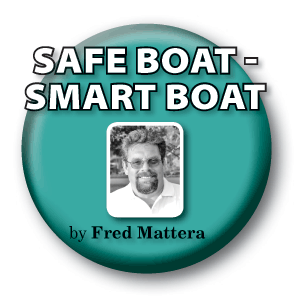In 2008, the Point Club, a mutual insurance and fishing vessel safety group of commercial fishing vessels in the Northeast, handed out free multigas detectors to all of its fishing vessel owners at its annual meeting.
This was part of the club and Sunderland Marine Mutual Insurance Company’s ongoing mission to heighten and implement safety awareness for their insured commercial fishing vessels.

A qualified Coast Guard-approved marine drill instructor, Fred Mattera of Point Judith, RI is the owner/president of North East Safety Training Co. (NESTCo), which conducts fishing vessel drills and inspections and basic safety training workshops.
The choice to distribute the multigas detector was prompted by an oxygen depletion incident in 2001, when a high concentration of hydrogen sulfide in the fish hold resulted in the fatality of one crewman and the serious injury of another crewman.
We are all familiar with incidents on fishing vessels related to hydrogen sulfide, carbon monoxide, ammonia, and freon poisoning. Such incidents usually happen while the victims are working in confined space and can occur without warning. The victims – and often would-be rescuers – are rapidly incapacitated by the concentration of poisonous gases and/or the displacement of oxygen by the gases.
A confined space is generally any space that: is large enough to accommodate a person; has limited or restricted means of entry and exit; and is not designed for continuous occupancy. On fishing vessels, confined spaces typically include fish holds, voids, tanks, deep bilges, lazarettes, and net lockers.
Confined spaces can trap and hold dangerous oxygen-depleted gases. Oxygen depletion is created by oxidation (rust), chemical reaction, combustion, organic decomposition, or displacement by other gases, fumes, or vapors. These conditions can cause asphyxiation.
Sources
Some of the most common oxygen depletion hazards found in confined spaces on fishing vessels are the following.
- Hydrogen sulfide (H2S) – This is a highly toxic gas created by decomposition of organic materials such as fish product, bait, gurry, mud, etc. This is the gas that smells like rotten eggs. However, one property of H2S is that it rapidly anesthetizes your nasal passages to the point where you can’t smell it anymore. H2S is also flammable.
- Carbon monoxide (CO) – CO is created by incomplete combustion of organic fuels such as gasoline, diesel, kerosene, oil, and wood. The most likely sources on a vessel are engine exhaust and portable heaters. CO is odorless, tasteless, and colorless. It will cause asphyxiation.
- Ammonia – This gas may be formed by decomposition of fish products but more commonly occurs from leaks in a refrigeration system. Ammonia has an unmistakable strong odor and is an eye and nose irritant.
- Freon – This is a refrigerant used in refrigerators, air conditioners, refrigerated seawater systems, and blast and plate freezer systems. Exposure occurs from leaks in the system. Freon has a sweet-smelling odor and causes difficulty breathing, pain and burning of the eyes, nose, and ears, and vomiting.
- Explosive gases/vapors – These can come from fuel vapors, paint and solvent fumes, methane from decomposition, welding gases, hydrogen gas from batteries, and pin holes in hydraulic lines.
- Others – Other hazardous gases include carbon dioxide from decomposition or combustion, sulfur dioxide from combustion, diesel fumes, and welding fumes.
Signs, symptoms
It is important to understand that the first symptoms of exposure to hazardous gases might very well be death or incapacitation. As described above, you simply can’t rely on your senses for sufficient warning.
Symptoms of low-level exposure could be headache, nausea, vomiting, dizziness, flushed skin, respiratory difficulty, diarrhea, excitement, or drowsiness.
The majority and most deadly oxygen depletion occurrences on fishing vessels – 86% – are caused by hydrogen sulfide and occur in confined spaces. Many casualties are the direct result of others trying to help a crewman in need.
Because of the confined spaces typical on fishing vessels and the extreme danger of these kinds of situations, captains should have plans to prevent hydrogen sulfide poisoning. Plans should include proper methods of response.
Consider posting signs in vulnerable areas.
Fred Mattera
VIEW MORE SAFETY ARTICLES IN THE ARCHIVES
[metaslider id=5688]






